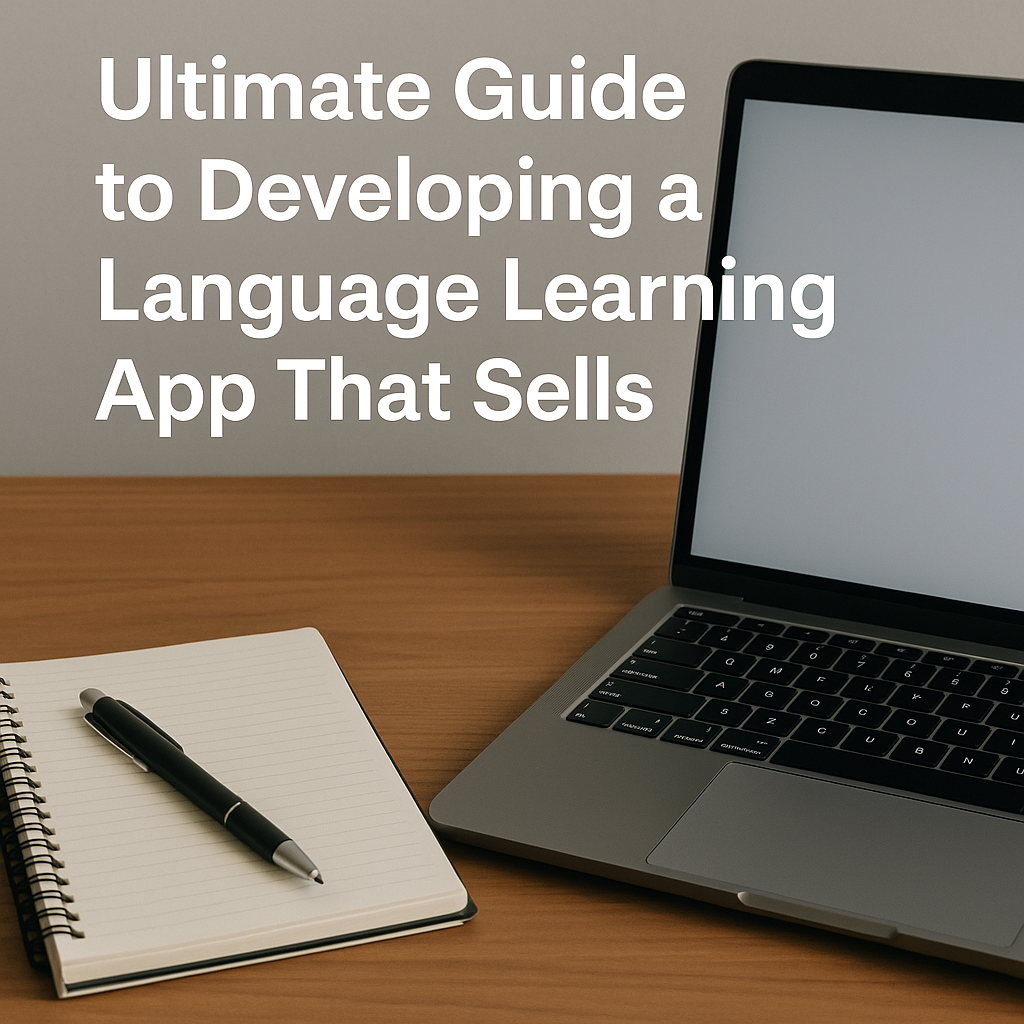Ultimate Guide to Developing a Language Learning App That Sells

In a world that thrives on global communication, language learning has transformed from a classroom necessity to a daily habit for millions. Apps like Duolingo, Babbel, and Memrise have redefined how we approach learning new languages—making it more accessible, engaging, and even fun. If you're looking to create an eLearning app tailored for language acquisition, this is the right time to turn your idea into a scalable, profitable product.
This guide walks you through the critical steps of building a language learning app that sells—from identifying must-have features to choosing the right monetization strategy and ensuring long-term market relevance.
Understanding the Market for Language Learning Apps
Before you dive into development, it's crucial to understand the market dynamics. Language learning is no longer limited to students or travelers. Today’s users range from remote workers and digital nomads to multilingual professionals, parents teaching their kids, and even retirees looking to sharpen their minds. The eLearning industry, particularly language learning, has seen explosive growth post-pandemic, making it a prime sector for innovation.
The global online language learning market is expected to reach over $30 billion by 2028. That growth is fueled by mobile-first usage, personalized content, and on-demand access. When you create an eLearning app focused on language, you're not just offering a tool—you’re selling a lifelong skill.
Key Language Learning App Features
To develop a compelling product, you must offer features that make the learning process effective, personalized, and rewarding. A few core language learning app features should form the backbone of your application.
-
Personalized Onboarding
First impressions matter. Allow users to set their native language, target language, goals, and learning level. This data will help customize their learning journey right from the start.
-
Interactive Lessons
The heart of any language learning app lies in its lessons. Use a combination of text, images, audio, and video content to teach vocabulary, grammar, and pronunciation. Break lessons into bite-sized modules so users can learn on the go.
-
Voice Recognition
Incorporating speech technology helps learners practice speaking in real-time and get feedback on pronunciation. This feature is especially important for developing verbal fluency.
-
Gamification
People learn better when they’re having fun. Use gamified elements such as points, leaderboards, daily streaks, and rewards to make learning addictive and encourage daily engagement.
-
Progress Tracking
Provide visual indicators of a learner's journey—such as completion rates, XP points, levels achieved, or quizzes passed. This motivates users and keeps them accountable.
-
Flashcards & Word Bank
Offer features like vocabulary lists, flashcards, and spaced repetition systems (SRS) to reinforce memorization of words and phrases.
-
Offline Access
Giving users access to lessons and quizzes offline ensures they can learn without relying on constant internet connectivity.
-
Push Notifications & Reminders
Send smart notifications to encourage regular practice, congratulate achievements, or suggest new modules based on user activity.
-
Multilingual & Multi-Level Support
Support a range of languages and proficiency levels—from beginner to advanced—so users can grow with the app without needing alternatives.
Designing for Engagement and Retention
When you create an eLearning app, aesthetics and user experience play a big role. A clean, intuitive interface with friendly visuals improves user retention. Use color psychology, animations, and interactive elements to guide users through lessons without overwhelming them. Provide instant feedback for correct or incorrect answers and allow users to review mistakes and try again.
Also, consider integrating a community aspect. Learners enjoy sharing progress, asking questions, or even competing. Social elements like chat groups, language exchange partners, or discussion boards can dramatically improve engagement.
Monetization Models That Sell
A key aspect of developing a language learning app is making it financially sustainable. Here are some monetization strategies that work:
-
Freemium Model: Offer essential features for free and lock premium content behind a subscription or one-time purchase.
-
Subscription Plans: Monthly or yearly access to premium content like advanced lessons, offline access, or certifications.
-
In-App Purchases: Offer add-ons like extra lesson packs, practice drills, or virtual coins for rewards.
-
Ads: Non-intrusive ads can generate revenue without hurting the user experience, especially on free plans.
-
Corporate Licensing: Partner with schools or companies to sell bulk licenses for employees or students.
Final Thoughts
Developing a language learning app that sells involves a strategic mix of intuitive design, quality content, personalized learning, and strong technical infrastructure. As more users seek flexible, mobile-first education, the need for effective language learning solutions continues to grow.
When you create an eLearning app that understands user needs, leverages interactive language learning app features, and offers real value, you’re not just entering the edtech market—you’re building a product that helps people connect across cultures, careers, and communities. That’s a business model with both purpose and profit.
- Art
- Causes
- Crafts
- Dance
- Drinks
- Film
- Fitness
- Food
- Games
- Gardening
- Health
- Home
- Literature
- Music
- Networking
- Other
- Party
- Religion
- Shopping
- Sports
- Theater
- Wellness


